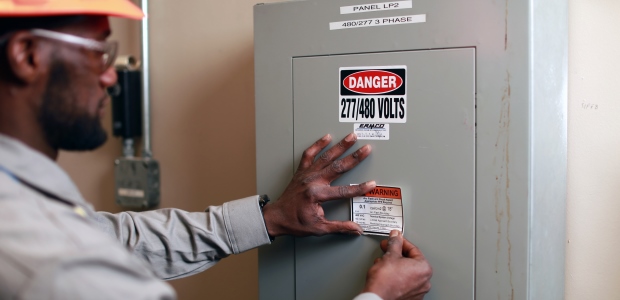
The Most Important 2018 Changes in NFPA 70E
Are you prepared to make the changes in your facility for the 2018 NFPA 70E updates?
- By David Weszely
- Oct 01, 2017
Electrical equipment and electrical safety devices are constantly being changed and improved, hence why your electrical safety program must address those changes. The NFPA 70E Committee addresses these changes and updates the standard every three years as part of keeping up with current technology and safety concerns. This is a standard used not only by facility managers and safety officers, but also by OSHA inspectors, continually educating them on existing trends in electrical safety.
We will go over some of the most important 2018 NFPA 70E updates worth discussing.
1. Are qualified persons required to complete a Job Safety Analysis (JSA) before starting work?
Article 110.1 (I)
Article 110.1 (I) states that if the proposed NFPA 2018 changes are implemented, a qualified person will also need to complete a Job Safety Analysis (JSA) before work or troubleshooting is performed. That JSA would require such "qualified person" to:
- Identify all tasks associated with the performance of the job
- Identify all specific hazards with each task
- Determine the severity and likelihood of unintentional injury for each task
- Identify what control measures can be used to reduce injuries
2. What should we look for in PPE labels in 2018?
Article 130.7 (C)(16)
Article 130.7 (C)(16) addresses PPE conformity. Purchasing the right PPE has always been a challenge for companies or those individuals responsible for making such decisions. To address the issue, the NFPA 70E standard has proposed to utilize the ANSI/ISEA 125-2014 national consensus standard for conformity assessments of safety and personal protective equipment in its 2018 edition. This conformity assessment provides an organized and systematic way for a supplier to verify that a product meets the requirements of a performance standard, communicating verification to the purchaser and user.
The NFPA 70E 2018 edition has proposed to add the new article 130.7 (C)(16) personal protective equipment conformity assessment. The purpose for the new article is to promote consistency regarding personal protective equipment testing. Three levels of conformity testing can be used by the manufacturer or supplier:
1. Supplier or manufacturer makes a self-declaration that the product meets all requirements of the ANSI/ISEA 125-2014 standard performance claims.
2. Supplier or manufacturer makes a self-declaration that product meets standard requirements but must also have a registered 9001 quality management system in place as a protocol for PPE testing under an ISO 17025 accredited testing laboratory.
3. Products then must be certified by an ISO 17065 accredited independent third-party certification organization. The testing must comply with such certification organization, and all products must be marked with the certified label.
The conformity assessment would be effective on Jan. 1, 2018. It then means that all personal protective equipment referenced in table 130.7 (C)(14) must comply with the associated reference standard section 9 of ANSI/ISEA 125, with conformity assessment levels 1, 2, or 3 marked on equipment and arc flash clothing labels in its entirety.
3. Arc flash and shock hazard risk assessment now include the "potential of human error."
Article 110.1 (H)
This new article explores the "human error concept" added to both job safety analysis and job planning in Annex Q. When filling out a JSA or a job safety plan, a new "human error concept" is to be applied to workplace electrical safety under the concept of a human performance factor. Studies have indicated that human error often is a root cause of incidents, which is why the addition is of high value.
Annex Q addresses the validity of human performance and factors affecting the workplace, electrical safety, and job performance, explaining how high stress, unfamiliar situations, lack of attention, worker fatigue, the surrounding environment, and human nature itself can affect overall human performance in the workplace. Additionally, Annex Q addresses the fact that workers may become too familiar with common tasks and therefore become less observant to the real risk still prevalent in some situations. Such perceived behavior can cause what is commonly called "unintended blindness" and/or insensitivity to the hazards of the job. To address these human characteristics, a "qualified person" will need to be trained in these factors:
1. Identify possible causes of human error
2. How human performance can affect job performance
3. Using human performance tools provided in Annex Q
4. Completing a job site review of human performance tools used
As an example, a "qualified person" would need to be able to determine whether each individual assigned a task is capable of completing the task mentally, physically, and emotionally.
4. Electrical safety programs must include a section on how to investigate an incident/accident.
Electrical safety programs are now entailed to include a new section on how to investigate electrical incidents/accidents in a facility. This process, though, must be specific to your organization and must include a root-cause analysis, near-miss reporting, and a follow-up investigation. Ultimately, safety programs need to define which employees should call to report incidents/accidents within the proposed time frame.
Tips and Advice
As the role of the "qualified person" keeps expanding, it is very important to ensure that the electrical safety training electrical workers receive also expands. Online training may often be more convenient but must not be a substitute for high-quality, hands-on, instructor-led training. The 2018 NFPA standard will be in effect as of Aug. 10, 2017, and we want you to stay current with all the changes and additions to all regulations.
Here are some steps to get your facility up to date with 2018 NFPA 70E:
1. Make sure all "qualified workers" have access to the 2018 NFPA 70E standard.
2. Ensure your electrical safety program is updated.
3. Schedule on-site NFPA 70E electrical safety training.
This article originally appeared in the October 2017 issue of Occupational Health & Safety.